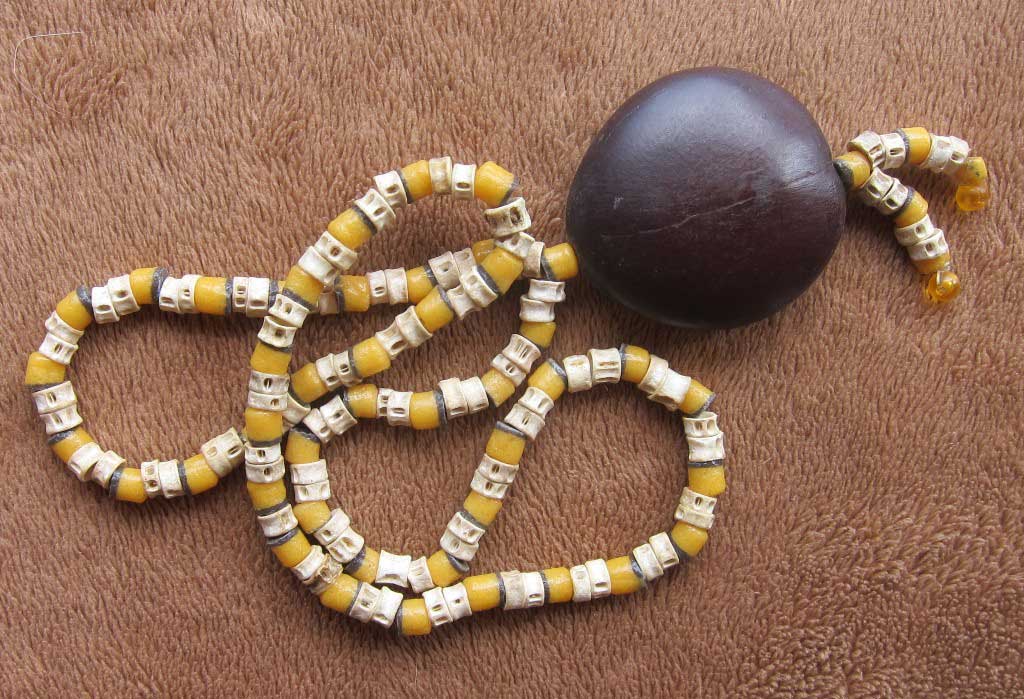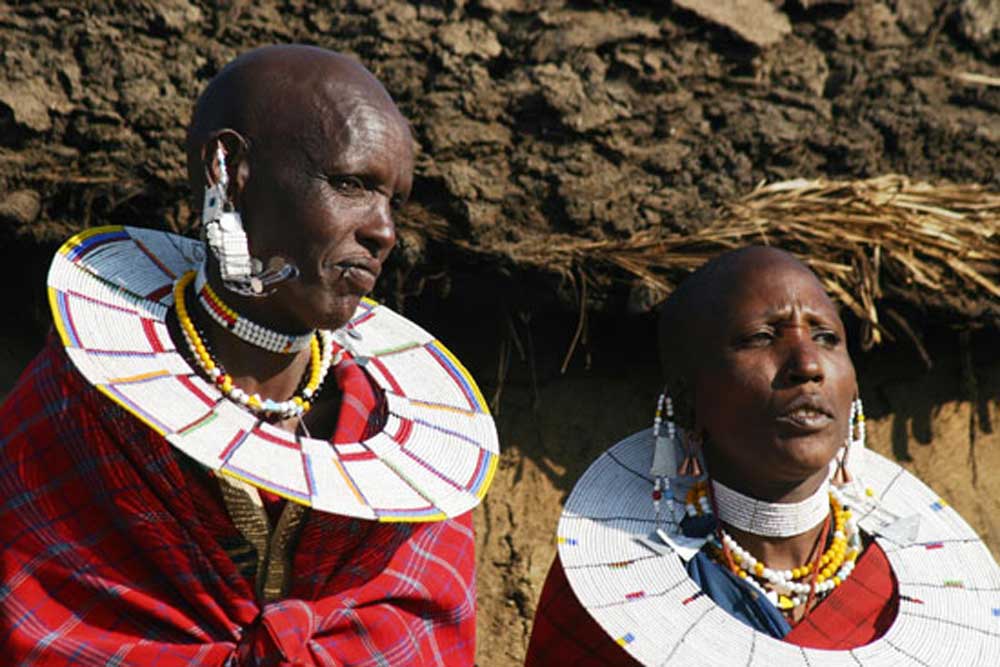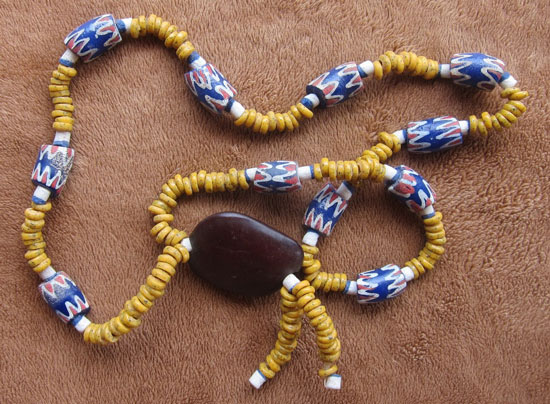
There are iconic images we all associate with certain places; the Great Wall with China and the Eiffel Tower with France. But when you think of Africa, beads are probably not the foremost image. Perhaps they should be.
Beads in Africa
Besides their role as physical adornment, beads are among the oldest known symbols used by mankind, some of them sharing time and space with the earliest known cave paintings, and symbols are a physical manifestation of an advanced thought process that separates Homo sapiens from lower creatures.
As such, beads have religious, social, and decorative properties. In Africa, more than any other region, they have long played a prominent role.

History of Beads
Many people believe that Phoenician mariners brought the first beads to Africa but there is no physical evidence to support this theory. What we do know is that in 2004 in a cave in South Africa near Cape Town, archeologists uncovered drilled ostrich egg beads that date back a minimum of 45,000 years and as much as 280,000 years, depending on who the examiner is.
Sudan, Kenya, and Libya have all yielded similar beads that have been dated to at least 12,000 years ago.
Various tribes of the Turkana people who range from northern Africa down to modern-day Kenya used beads as currency and they were commonly paid as marriage dowries and used for the purchase of cattle.
Cowry shells can be found throughout Africa and are probably the most used decorative symbol on the continent. They saturated the land tens of thousands of years ago when much of today’s Africa was underwater.
Because of their mouth-like shape, many people liken their image to a vagina and as such they have long been used as a symbol of fertility, especially as ceremonial beads. In drier areas that lack cowries, eggshells have served the same purpose.

Almost all beads were made from indigenous, organic materials until around the 4th century A.D. when glass beads made their way into the continent from Portugal, and about this same time there is archeological evidence recovered from tombs in the Valley of the Kings in Egypt that glass beads were in widespread use as personal decorations for noble families.
For the next seven centuries, beads were the driving force of the African economy.
By mid12th century Ghana, Ethiopia, and Nigeria were producing glass beads and continue to do so even today.
When foreign seafarers and explorers began to infiltrate Africa around the 14th century they brought glass chevron beads with them to trade for safe passage. These are produced by a rigorous process whose end result is several layers of alternating colors.
Millefiori Beads
Chevron beads were soon joined by Millefiori beads from Italy, another type of multi-colored bead that hold intricate patterns in their design. Both of these styles proved to be very popular as currency for another four centuries.
Venice, Italy was producing most of the glass beads for African trade by the 1700’s and these came to be popularly called “slave beads” as they were the primary currency used for the buying and selling of people at the time.
Unfortunately, that term was in common usage until the 1920’s when socially conscious people began to realize just how offensive the word was and it was replaced with the term, “trade beads.”
As the craft of bead making progressed, smaller and smaller beads were produced, making it possible to employ them in the widespread decoration of clothing.
Whatever their vast and varied origins, beads remain a staple of African culture today. Numerous tribes have not only become masters of bead production and their use as decoration but have garnered worldwide reputations as artists of this milieu.
Ghana Largest Producer of Beads in Africa
Ghana was and still is the largest producer of beads in Africa and the Ashanti and Krobo people make them from the ground, powdered glass that is uniquely identifiable.
The Fulani, hereditary nomads who range throughout a third of the continent, favor brightly colored glass beads.
In Malawi, they create vibrant glass beads that favor floral patterns while in Mozambique, indigenous gemstones are a popular medium.
Zaire is known for stone beads while Uganda is leading the way by making beads from recycled paper. In Ethiopia, men and women of the Hamer tribe both wear headbands, armbands, necklaces and chokers of beads and in the Great Rift Valley, the Iraqi people work beaded designs onto their clothing that is in great demand by collectors.
In my travels, I have also uncovered beads made from cork and fish bones, horn, ivory, metal, ceramic and wood.

There are a number of tribal cultures that have raised beadwork to its highest levels, employing it not only for rites and ceremonies, but incorporating beadwork into the utensils of everyday life, turning the most mundane objects into living works of art, and probably the best known of all are the Maasai.
Maasai Beads
The Maasai favor bright, primary colors, red, yellow, blue, and both men and women wear earrings, chokers, necklaces, ankle, and wrist cuffs, but are probably best identified with the large round neck collars that adorn the women, and that has become their identifying icon to the world.
This writer even has a beaded Maasai watch band. They do not only wear these items for special occasions, but as an everyday way of life. Maasai beadwork proclaims their joy of living every waking moment.
North American Plains Indians Beads
The North American Plains Indians are also known for their magnificent beadwork that interestingly enough bears many of the same designs and patterns of early African beading. There are many anthropologists who believe this art form traveled over the now lost Aleutian land bridge when Asia and the Americas were connected long ago.
As science continues to allow us to look further and further into the past, we just might discover that this most African of icons is much older than anyone ever expected.
- How to Get Around in Sydney: A Local’s Guide to Traveling Around Sydney - April 24, 2024
- The Low-Key Magic of Ghent, Belgium - April 22, 2024
- Discover the Hidden Charm of Extremadura in Spain - April 20, 2024
